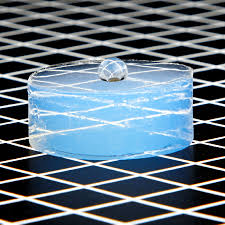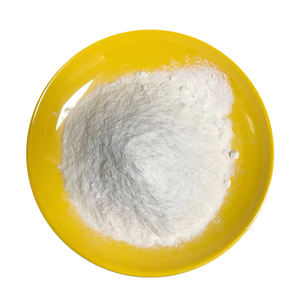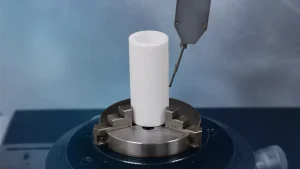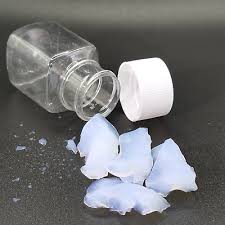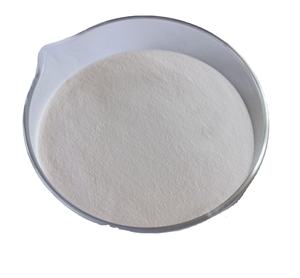Professional industry ceramic supplier, silicon nitride, silicon carbide, aluminum nitride and any other kinds of ceramics.
1. Introduction
In the past 48 hours, a surge in inquiries from foundries and lab technicians has highlighted growing concerns about unexpected silicon carbide crucible failures during high-temperature metal melting. Many users report cracks after just a few uses—often due to improper thermal cycling or material confusion. This guide walks you through proven best practices to maximize the lifespan and performance of your silicon carbide crucible.

Silicon carbide crucibles are prized for their exceptional thermal shock resistance, high thermal conductivity, and ability to withstand temperatures above 1600°C. But even the toughest advanced ceramic can fail if mishandled. Whether you’re melting aluminum, copper, or precious metals, following these steps will help you avoid costly mistakes.
2. Understanding Your Silicon Carbide Crucible
Before diving into usage, it’s crucial to distinguish silicon carbide from similar-sounding materials. Silicon carbide (SiC) is not the same as silicon nitride (Si3N4) or boron carbide (B4C). While all are advanced ceramics, they serve different purposes. For example, a silicon nitride crucible factory might produce components for aerospace, but silicon carbide crucibles dominate metal casting due to superior oxidation resistance and thermal stability.
Also, don’t confuse your crucible with consumer-grade items like silicon carbide ceramic dinner plates or silicon carbide baking dishes—even if they share the same base material. Industrial silicon carbide crucibles are engineered for extreme conditions, unlike kitchenware such as silicon carbide ceramic casserole dishes or butter dishes.
3. Step-by-Step Guide to Using a Silicon Carbide Crucible
3.1. Preheating the Crucible
Never place a cold silicon carbide crucible directly into a hot furnace. Thermal shock is the #1 cause of cracking. Always preheat gradually:

- Start at 200–300°C for 30 minutes to drive off moisture.
- Increase to 600–800°C over 1–2 hours.
- Hold at this temperature for another 30–60 minutes before ramping to your target melting point.
This slow ramp prevents internal stress buildup in the dense silicon carbide structure.
3.2. Loading the Charge
Avoid overfilling—fill only to 70–80% capacity. Sudden expansion during melting can cause spills or mechanical stress. Also, ensure your charge (metal or alloy) is dry and free of contaminants like oil, paint, or moisture, which can cause steam explosions or carbon buildup inside the crucible.
3.3. Heating and Melting
Use a consistent, controlled heating rate. Rapid temperature spikes—even after preheating—can still cause microcracks. If using induction or gas furnaces, position the crucible evenly to avoid hot spots. Remember, silicon carbide ceramic tubes or silicon carbide burner nozzles in your furnace system also benefit from uniform heat distribution.
3.4. Cooling Down Safely
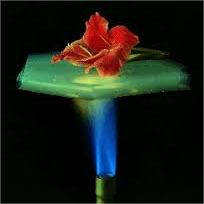
After pouring, never quench the crucible in water or cold air. Allow it to cool naturally inside the furnace with the power off, or transfer it to a preheated annealing chamber. Rapid cooling negates all the benefits of silicon carbide’s thermal shock resistance.
4. Cleaning and Maintenance
Residue buildup reduces efficiency and can lead to chemical reactions in future melts. After the crucible cools completely:
- Gently tap out solidified slag with a non-metallic hammer.
- Use a soft brush or compressed air to remove loose particles.
- For stubborn deposits, apply a mild flux during the next preheat cycle—but avoid aggressive acids or alkalis that degrade SiC.
Never use steel wool or abrasive grinding discs like silicon carbide diamond grinding discs for pottery on your crucible interior—they can scratch the protective oxide layer.
5. Common Mistakes and How to Avoid Them
5.1. Confusing Silicon Carbide with Other Ceramics
Some users mistakenly treat silicon carbide crucibles like zirconia crucibles or alumina (Al2O3) crucibles. Each has different thermal and chemical limits. For instance, zirconia crucibles excel in reactive melts but are more brittle. Stick to SiC for non-ferrous metals and high-cycle operations.
5.2. Ignoring Compatibility with Accessories
Your furnace setup matters. Using incompatible components—like a boron carbide vs silicon carbide nozzle—can create thermal mismatches. Match your crucible with compatible advanced ceramics: silicon carbide ceramic columns, rbsic silicon carbide tile blocks, or silicon carbide bricks for lining.
5.3. Overlooking Environmental Factors
Store your crucible in a dry, room-temperature environment. Moisture absorption—even in dense SiC—can cause spalling during reheating. Keep it off concrete floors and away from humidity.
6. When to Replace Your Crucible
Inspect regularly for:
- Hairline cracks or surface pitting
- Thinning walls or deformation
- Discoloration indicating chemical attack
Even with perfect care, silicon carbide crucibles have a finite life. Replace them before catastrophic failure occurs—especially if used daily in industrial settings.
7. Conclusion
A silicon carbide crucible is a high-performance tool, but it demands respect for thermal protocols and material science. By preheating properly, avoiding contamination, cooling slowly, and storing correctly, you’ll extend its life and ensure consistent results. And remember: while silicon carbide appears in everything from silicon carbide ceramic serving bowls to silicon carbide thermocouple protection tubes, industrial crucibles require industrial-grade handling—not kitchenware care.
Our Website founded on October 17, 2012, is a high-tech enterprise committed to the research and development, production, processing, sales and technical services of ceramic relative materials such as How. Our products includes but not limited to Boron Carbide Ceramic Products, Boron Nitride Ceramic Products, Silicon Carbide Ceramic Products, Silicon Nitride Ceramic Products, Zirconium Dioxide Ceramic Products, etc. If you are interested, please feel free to contact us.

